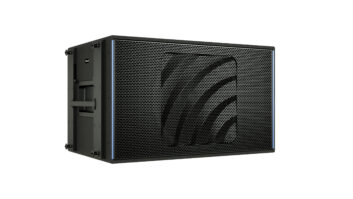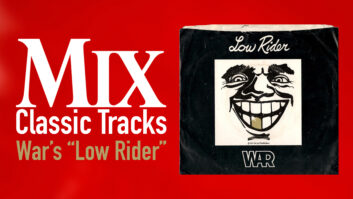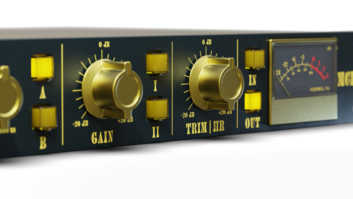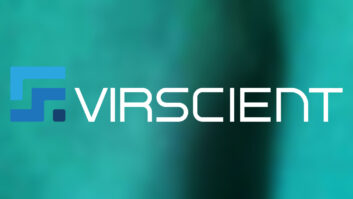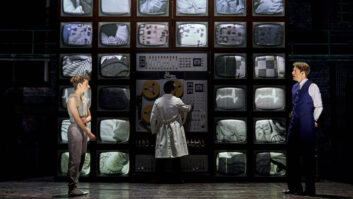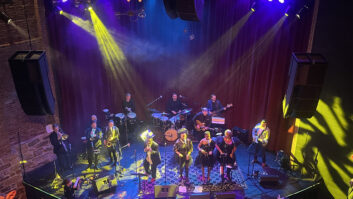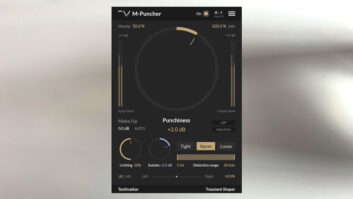In his Continuing Adventures In Software, Rich Tozzoli takes the low (end) road.
It’s hard to believe Spectrasonics’ (spectrasonics.net) first bass software instrument, Trilogy, was released in 2002. This many years later, the company has released an updated big brother called the Trilian Total Bass Module. Weighing in at over 34 GB of acoustic, electric and synth basses, even Nigel and the boys would be proud of this big bottom.
Using the same Steam engine that powers its successful Omnisphere synth, this offers the usual assortment of Eric Persing’s goodies: Arpeggiator with Groove Lock for instant bass line syncing to any RMX groove or MIDI file, integrated FX racks (with all the effects from Omnisphere), “Round Robin” sampling for more natural-sounding bass lines and even 64-bit native support (so you new Logic users can use all your RAM!). You’ve also got a cool Stack Mode and, of course, all the original Trilogy sounds are in there, and then some.
The acoustic bass alone is worth the under -$300 street price. You can actually choose your own mix of the U-67 mic and the Direct (DI). There are also controls for the Release Noises and Time, as well as a Compressor/Limiter with Velocity Sensitivity. With its 8-part multi-timbral articulations, you can use the keyboard itself or a controller to instantly switch for example between sustained notes, harmonics and slides. With over 21,000 samples in a patch, the bottom line here is that this acoustic bass sound is #)$*_# good!
Another cool thing about Trilian is that it’s completely integrated into Omnisphere. So if you own Omnisphere, you can open the sounds of Trilian inside it. All you need to do is use the Patch Browser and choose the Trilian Library in the directory. You could, for example, then choose a bass sound from Trilian and in Stack Mode and easily create a split with a nice Omnisphere patch.

This is a very useful function that I hope other software manufacturers pay attention to. We folks out here using all this gear are, to be honest, overwhelmed with too much “stuff.” Any way that we can simplify our creative lives helps—and integrating one plug-in into another is a bonus—so thanks Eric.
As for electric bass sounds, there are more than 60 of them, including 4-, 5-, 6- and 8-string models, played by six different bassists. These are not just some hacks off the street either; the bonus “Bass Legends” section features Abraham Laboriel, John Patitucci and Marcus Miller. Included are sounds from instruments such as the Chapman Stick, 5-string Music Man, Fender Jazz and Lakland Rock-P Bass. You can choose from various techniques as well—Picked, Fingered, Fretless, Slapped, Tapped and Muted. There are some amazing harmonic bass sounds, too.
The synth section is loaded; they’ve sampled over 300 sound sources from such well known models as the Novation Bass Station, ARP 2600, Roland TB-303 and SH-101, Taurus pedals and even a Metasonix KV-1000 Assblaster (what a great name!). Tweakers will love the new “Juicy Filter” and “Power Filter” to really thicken up the bass stew.
This was actually a hard review to write, as each time I called up a patch, I found myself writing a cue based around that sound. I’d be forced into doing a “Save As” in Pro Tools, and then I’d go off on a tangent to finish a piece. I’m currently writing some cues for an A&E show with a haunted theme, and—wow!— this plug-in is an inspiration monster. The arpeggiated synths, such as Apocalyptic Signs, Hells Disco and Instinctual Action are all one-key foundation builders (hey, I’m not too proud to write a one-key cue!).
Overall, the Trilian is a dream come true for anyone seeking acoustic, electric or synth bass sounds. The integration into Omnisphere is not only intelligent but also incredibly useful. With the massive amount of sounds in here, you’d be hard pressed to not find what you’re looking for. Stepping back, sometimes it’s nice to just call up a punchy, clean, great-sounding acoustic bass and lay a simple groove down. If that doesn’t get you going, it’s time to put a suit and tie on and look for another line of work.
